
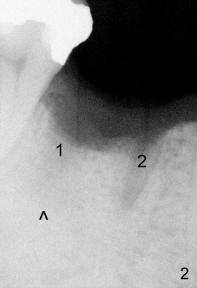
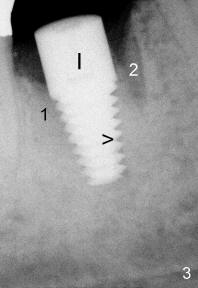
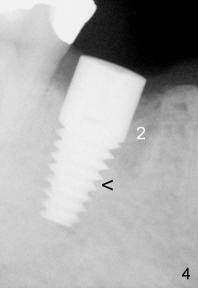
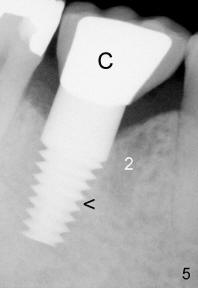
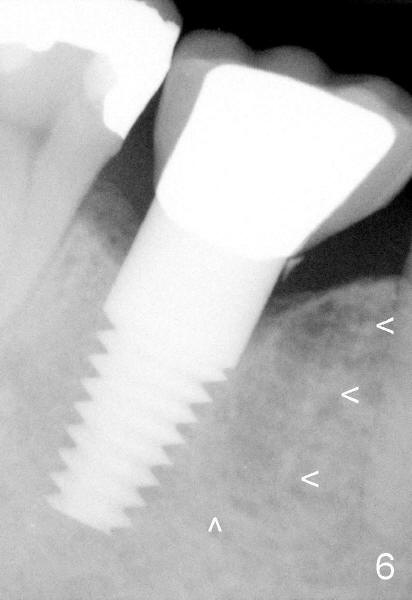
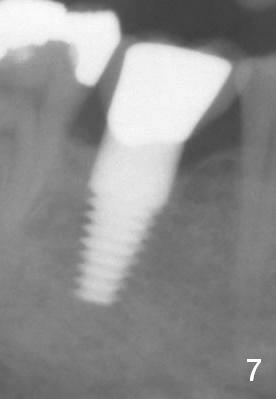
 |
 |
 |
|
 |
 |
 |
 |
Dental Education Lecture: I finally have something permanent
Mr. Huang is in his early forties. One of his bottom molars has given him trouble since childhood. It has been fixed several times. Finally it is beyond repair (Fig.1: *) with large root tip abscess (arrowheads). To make thing worse, he develops dry socket (severe pain) after extraction of this tooth. With proper treatment, the wound heals eventually. To our pleasant surprise, one of sockets (Fig.2: #1) with large root tip abscess previously appears to heal better, as the density in socket #1 is more solid than that in socket #2. X-ray in Fig.2 is taken 3 months after extraction. The root tip abscess seems to be disappearing (arrowhead, compared to those in Fig.1).
Now it is time for reconstruction: placement of implant (Fig.3: I). With bone expansion technique, the implant is in, with shrinkage of sockets 1 and 2, as compared to those in Fig.2. Not much bone is removed. When the implant is just placed, there are empty spaces inside implant threads (Fig.3: arrowhead). Besides, Mr. Huang does not experience any discomfort after implant placement.
Five months later, bone grows into the threads of the implant (Fig.4: arrowhead), suggesting that the implant is very stable within the bone. The density of socket #2 is higher than that in Fig.3.
Now it is time for the implant to work. A crown is placed (Fig.5: C). Mr. Huang is so happy that he says "I finally have something permanent". Once again, Fig.5 shows that bone has grown into the threads of the implant (arrowhead). The density of socket #2 is higher than that in Fig.3. With proper care, implant will serve us for long long time.
Six and one half months later, Mr. Huang returns to dental office for follow-up. His dental implant is doing very well (Fig.6). Bone patterns within the area indicated by arrowheads change according to chewing function of the implant. This tooth is so strong that it may contribute to breakdown of an opposing tooth. Mr. Huang keeps enjoying his implant crowns for nearly 5 years after crown cementation (Fig.7).
Return to Implants
Xin Wei, DDS, PhD, MS 1st edition 05/18/2011, last revision 03/13/2016